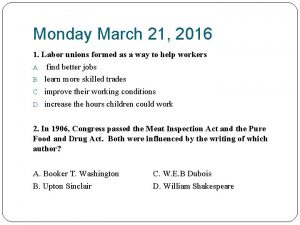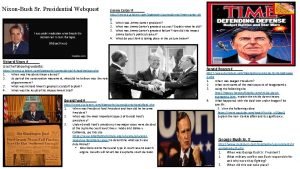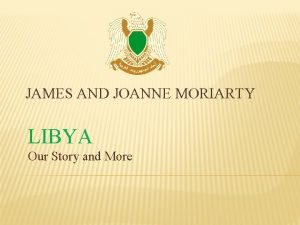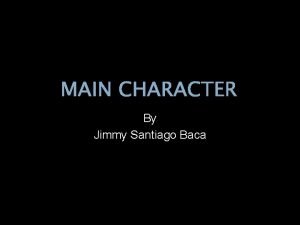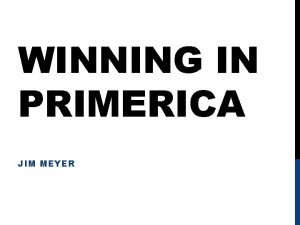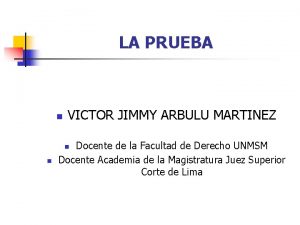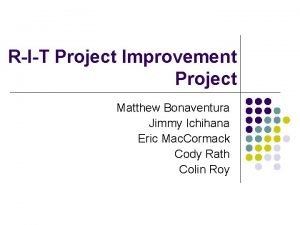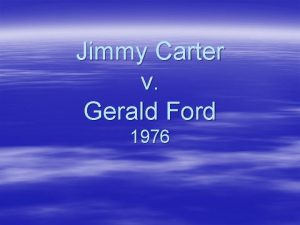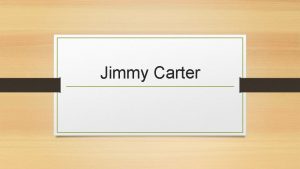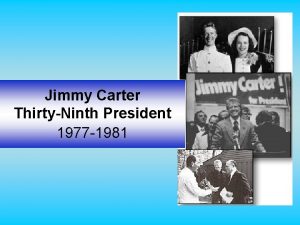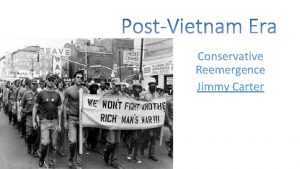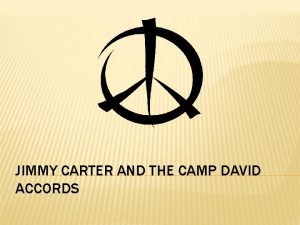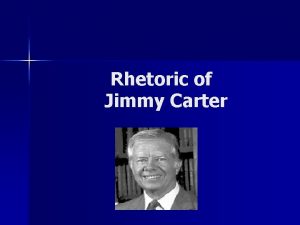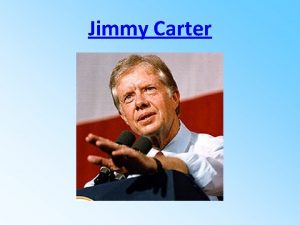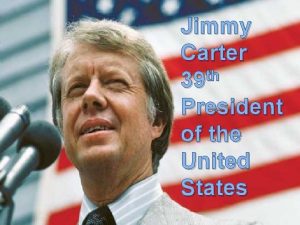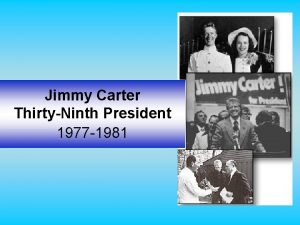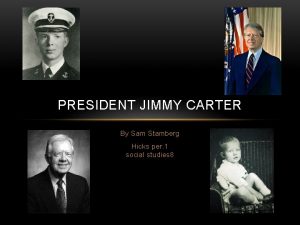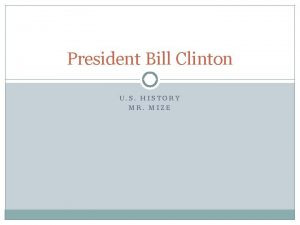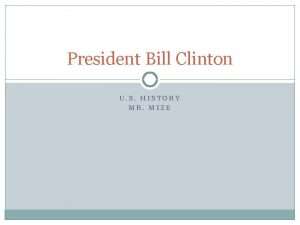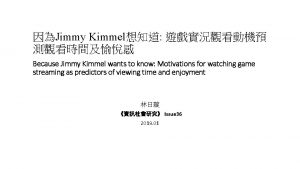Mr Mize President Jimmy Carter the 1970 s




















- Slides: 20

Mr. Mize President Jimmy Carter & the 1970 s

Carter’s Challenges U. S. Inflation Foreign Policy New Congressional Power Viet Nam Syndrome

At Home – U. S. A. By the end of the 1970 s, interest rates on homes up 17% Cost of a 30 -year $100, 000 mortgage up from $421 in the 1950 s to $1, 425 per month in 1970 High oil prices US passenger cars averaged only 13. 4 mpg; Oil Crisis of 1979 shortages, lines at gas stations.

Viet Nam Syndrome http: //pewresearch. org/pubs/432/iraq-and-vietnam-a-crucial-difference-in-opinion

Carter Policies: “Dovish” Human Rights SALT II

Carter Policies: Hawkish MX MISSILE TRIDENT D-5 MISSILE

Foreign Policy End US support for repressive regimes Iran Peace in Middle East Camp David Accords

“Arc of Crisis”

Foreign Policy cont. Carter wants a peace in the holy lands Asks Palestinians to meet with Israelis Barriers: Israel won’t deal with the PLO unless it renounces its commitment to the destruction of Israel; Too many Issues US domestic policy concerns question of Israel’s boundaries and its settlements program

Camp David Accords Camp David, 1978 Meeting between Israel and Egypt • Egypt became the first Arab country to recognize Israel • Israel promised to return the Sinai Peninsula • Longest lasting Arab. Israeli peace agreement

Iranian Revolution Iran’s “Shah” (king) was overthrown in Iranian Revolution US installs Shah Mohammed Reza Pahlavi in power, 1953 Shah’s regime repressive, closely tied to the west US reliant on Iran for oil and support for its Middle Eastern goals Carter supports the Shah, who is overthrown in 1979 US allows Shah to come to USA = Iranians mad at USA

Iranian Revolution cont. Iranian rebels took the US Embassy and held 66 people hostage (14 would be released later), November 1979 Plan was to occupy the Embassy for a few days as a symbolic gesture American media hyped the taking of Embassy personnel Extremely nationalistic response of the American people; unease with government powerlessness; yellow ribbons

November 4, 1979

Iranian Revolution cont. Carter’s efforts to negotiate, enforce the release of the hostages Failed rescue effort, April, 1980 leaves 8 U. S. soldiers dead US used Algeria to facilitate negotiations USA agreed not to overthrow the new regime in Iran Ayatollah Khomeni becomes new leader Hostages released just after Reagan’s oath of office

Rescue Mission April 1980

Congressional Power War Powers Resolution 1973 Limits President’s Powers to send troops into action without approval of Congress

Carter Approval Ratings

1980 Elections

Carter’s Image Then

Carter’s Image Today
 Mize metals
Mize metals Jimmy carter
Jimmy carter Presidential webquest
Presidential webquest Ducks unlimited president
Ducks unlimited president Jimmy goh giam hwee
Jimmy goh giam hwee Jimmy akintonde
Jimmy akintonde Tom waes viajes
Tom waes viajes Jimmy moriarty libya
Jimmy moriarty libya Santiago
Santiago Jimmy chen eqt
Jimmy chen eqt Coupon craze
Coupon craze Primerica rvp salary
Primerica rvp salary Jimmy doors
Jimmy doors French toast sticks sams
French toast sticks sams Gadsden purchase jimmy fallon
Gadsden purchase jimmy fallon Jimmy wales board member of
Jimmy wales board member of Victor arbulu martinez
Victor arbulu martinez Jimmy kroon
Jimmy kroon Jimmy cournoyer
Jimmy cournoyer Lead singer of jimmy eat world
Lead singer of jimmy eat world Jimmy ichihana
Jimmy ichihana

